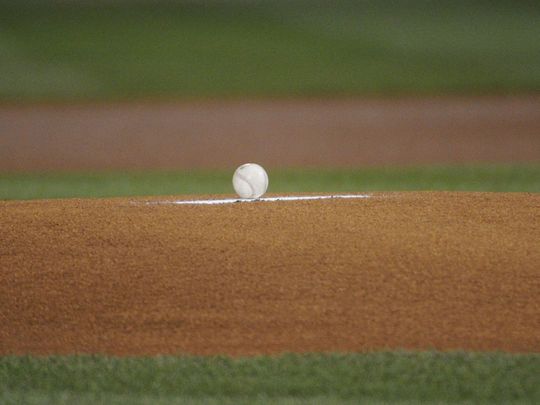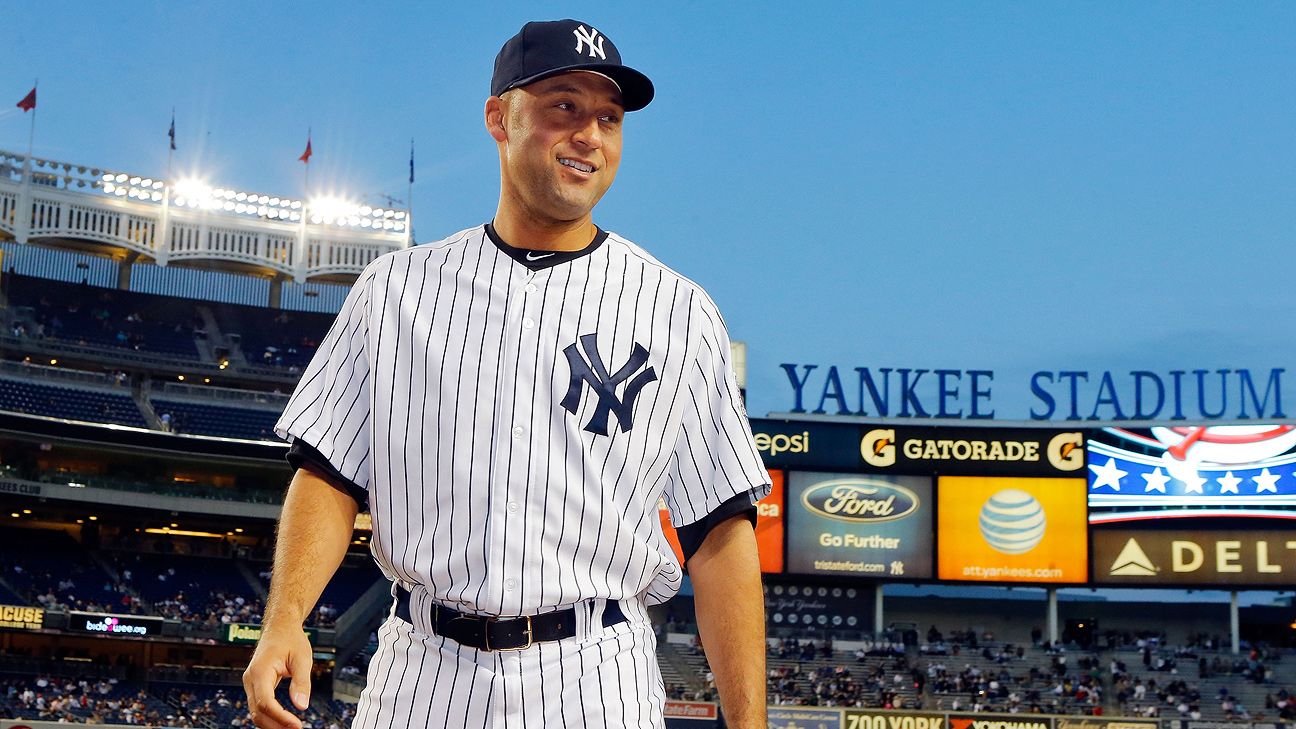Less Than 3 Weeks to Opening Day…
I always love the arrival of pitchers and catchers in early February, followed shortly thereafter by the position players. The first images of Spring Training are always a welcome sight after a long, cold winter. The first glimpses of the players on the practice fields near Steinbrenner Field, the popping of catcher’s mitts and the sounds of bats as balls leave the yard. But gradually, the excitement fades and the arrival of Opening Day can’t get here fast enough. We’re here now. I am starting to lose interest in watching guys like Trey Amburgey and Isiah Gilliam playing games and want to see the MLB regulars consistently through game’s end.
 |
| Credit: Butch Dill-USA TODAY Sports |
For the Yankees, hopefully there will be no further injuries this Spring. We know at least three players are headed for the Injured List to start the season. Luis Severino, Jacoby Ellsbury, and CC Sabathia. Sevy is currently in the midst of his two-week shutdown. It was reported yesterday that he isn’t feeling any pain after a cortisone shot. But like a doctor once told me after a cortisone shot, it masks the pain but doesn’t cure the problem. Based on Sevy’s positive words, I am cautiously optimistic that rest is the cure and there will be no further setbacks for him. Ellsbury, after such a late start to camp (expected to arrive next week), will need to stay for extended spring training, assuming he’s 100% healthy even when he arrives (unlikely if you ask me). Sabathia, as we know, had a delayed start this Spring after last December’s angioplasty and has been going a little slower than the rest of the starting rotation.
Two inactive players in camp are already destined for the Injured List as they continue their respective recoveries from Tommy John surgery: Didi Gregorius and Jordan Montgomery. I had been bracing myself for the possibility Gregorius could be out until August but he is seemingly ahead of schedule and we could see him as early as June. Regardless of how well Tulo may be playing at the time, Didi will be such a welcome sight when he is cleared to play. Montgomery is doubtful to provide any meaningful contribution this season. When he is cleared to throw and begins his rehab, he’ll head to the Minor Leagues. I see him as nothing more than a spot starter very late in the season, if at all. Many fans are acting like he’ll be a great trade deadline “acquisition” but honestly I don’t see him pitching any big games for the Yankees this year. Even healthy, he is not one of the best starters and I think it will be next season before he’s truly back and ready to help.
So, in my opinion, Opening Day seems to be pointing to the following roster:
Projected 2019 New York Yankees Opening Day Roster
|
Catcher
|
Gary Sanchez
|
First Base
|
Luke Voit
|
Second Base
|
Gleyber Torres
|
Shortstop
|
Troy Tulowitzki
|
Third Base
|
Miguel Andújar
|
Right Field
|
Aaron Judge
|
Center Field
|
Aaron Hicks
|
Left Field
|
Brett Gardner
|
Designated Hitter
|
Giancarlo Stanton
|
Super Utility
|
D.J. LeMahieu
|
Bench
|
Tyler Wade
|
Bench
|
Austin Romine
|
|
|
SP-1
|
Masahiro Tanaka
|
SP-2
|
James Paxton
|
SP-3
|
J.A. Happ
|
SP-4
|
Jonathan Loaisiga
|
SP-5
|
Domingo German
|
|
|
Closer
|
Aroldis Chapman
|
Setup
|
Dellin Betances
|
Rest of the Bullpen
|
Zack Britton
|
|
Adam Ottavino
|
|
Chad Green
|
|
Jonathan Holder
|
|
Tommy Kahnle
|
|
Luis Cessa
|
This is not necessarily the OD roster I want but rather what the tea leaves seem to be saying according to my eyes. I know many fans can’t let go of the homer Greg Bird hit off Andrew Miller in the playoffs a couple of years ago but Voit deserves the first base job based on last season’s performance (until proven otherwise). As the loser of the first base job, I expect Bird to begin the season at Scranton/Wilkes-Barre. I’ve seen people say one of Voit or Bird should be traded but I do think it would be unwise. As much as I like Voit, he needs to prove last Fall was not a fluke. If not, Bird needs to be ready for the call-up while playing every day for the RailRiders. LeMahieu is expected to be the backup first baseman.
This lineup forces the Yankees to use Stanton in left field more often than they would like. I know I don’t see Brett Gardner as an every day starter anymore but no doubt Manager Aaron Boone will run him out there as often as possible. I still expect Clint Frazier to eventually come up from Triple A to mount a serious threat for playing time but realistically it won’t happen until later this summer if Frazier mashes for the RailRiders unless injuries mandate an earlier call. There’s no circumstance I see Gardy as the starter when the calendar page turns to September.
I am a bit concerned about the nagging little ailments that always seem to bother Hicks. He has been held out of games over the past week due to tightness in his back and is still feeling some discomfort. He is not expected to return to play until next Tuesday at the earliest according to Aaron Boone’s words yesterday. I am hopeful the back does not become a season-long malady. I am sure Hicks wouldn’t have missed as much time if it had been the regular season but there’s still concern (if not the Yankees, at least for me).
Tyler Wade’s speed and versatility (ability to play infield and outfield positions) makes him the most logical option for the bench. If he gets the job, I really hope this serves as his breakout year.
My preferred starting lineup would feature LeMahieu at second, with Torres sliding to shortstop, until Gregorius returns. But hey, what do I know. Brian Cashman and Aaron Boone get paid a lot of money to make those decisions and they’re certainly much smarter and more knowledgeable about the Yankees than I am.
 |
| Credit: Kim Klement-USA TODAY Sports |
Tanaka at the top of the rotation is my speculation that he’ll be named as the Opening Day starter. Otherwise, I’d rate Paxton as the slightly better pitcher (sorry Masa). Sevy is expected to be checked late next week to see if he can resume throwing. Best case scenario, we won’t see him until late April or even possibly early May. The concern here is the potential for further setbacks which would delay Sevy much longer than originally expected. Everyone keeps expecting CC Sabathia to come back pitching like he did last season but that’s not a certainty by any stretch of the imagination. The guy had a stint placed in a heart valve. It’s a serious procedure and we honestly do not know how it will affect him until he actually pitches against live hitting in games that matter. I can’t say that I am too enamored with the heavy reliance upon Loaisiga and German (or Cessa) in the early going. I know GM Brian Cashman has said the Yankees intend to go with the internal options, but really, what else is he supposed to say. Even if he is very interested in signing a free agent arm or acquiring another pitcher via trade, he is not going to tip his hand and show any signs of desperation. It would force the Yankees into an overpay situation. So, while I expect the Yankees to go into the season with Loaisiga and German as starters, it wouldn’t surprise me if the Yankees make another move to bring in a veteran starter. There’s no scenario I see Dallas Keuchel as a Yankee. The money, the years, and the draft pick compensation attached simply do not make any sense. I guess age 31 is the new 41 in Major League Baseball. The next few weeks should be interesting as the 2019 Opening Day Roster takes shape. Inevitably, there is always a surprise or two. We’ll see.
As expected, the Yankees reacquired controlling interest in the YES Network. Holding 20% ownership in the network, they purchased the remaining 80% from Disney with the help of other investors, including Amazon, Blackstone Group and Sinclair Broadcast Group, for $3.47 billion. The transaction presumably increases the Yankees’ stake in YES to 30% and controlling interest among the financial backers. I’ve seen many fans complain about the Yankees’ investment in the YES Network over signing former free agents Bryce Harper and Manny Machado but, in my opinion, one does not affect the other. I don’t think the YES Network acquisition impacted the decision not to pursue Harper and Machado, nor do I feel that signing one of those guys would have prevented the purchase. Long-term, for the Yankees, I feel reacquiring control of the YES Network is a wise decision. It does underscore the fact the Yankees are a very valuable franchise and regardless of how one feels about Harper and Machado, a very financially astute one.
The sale does not require FCC approval but it is expected to take 120 days to complete. It was reported the financial partners have their own strategic plans for the acquisition but the Yankees will control programming, and the choice of announcers. We may love baseball but it’s hard to ignore the Yankees are a major business and all decisions are made for the long-term vision and success of the organization.
Speaking of the YES Network, I’ve been very pleased with their decision to have guest announcers this Spring. I particularly enjoyed the recent insight of Reggie Jackson. As a fan who grew up with the famed Bronx Zoo, it was fun listening to Reggie’s stories of those days. I loved Thurman Munson and enjoyed hearing his name again. Willie Randolph did a great job too. David Wells is scheduled to sit in the booth next Friday and Saturday when the Yankees play two of his former teams, the Boston Red Sox and the Toronto Blue Jays. Boomer remains one of my all-time favorites and I am looking forward to his appearance.
As always, Go Yankees!





